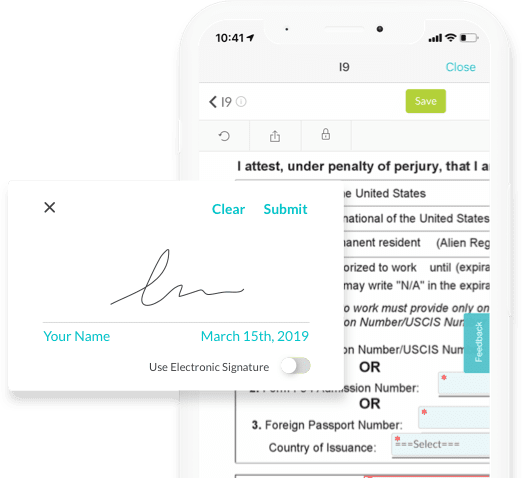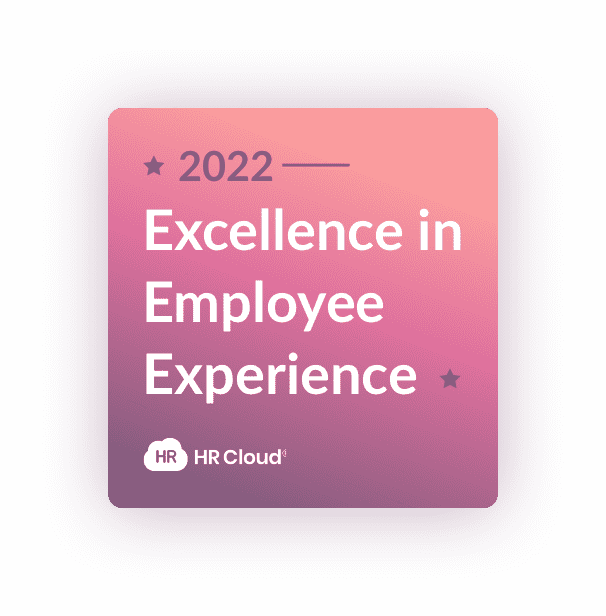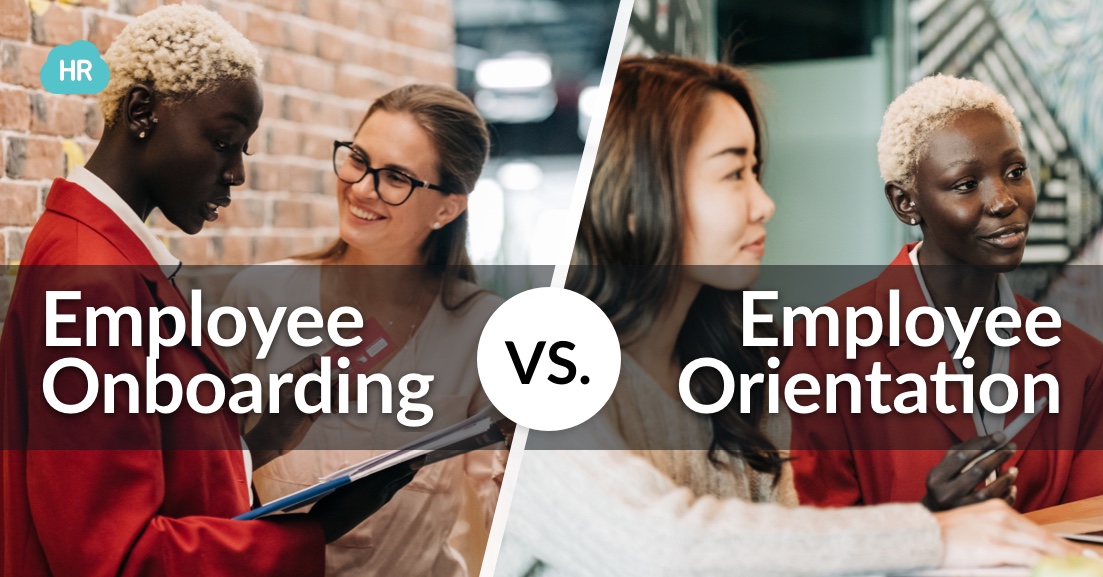Employee onboarding and orientation are two of the most critical steps in starting a new job. They are essential to helping employees prepare for their new roles and avoid excess stress and overwhelm.
What differentiates these processes in recruitment? This article will analyze the key differences between employee onboarding and employee orientation.
What Is Employee Orientation?
Orientation is a one-time event on an employee's first work day that aims to provide new employees with general information about the company, benefits, and job duties. It is also an opportunity for employees to meet their co-workers and learn about the company culture.
Although orientation gives employees a broad overview of the company, it does not provide specific information about their job or department. Orientation is typically a shorter process than onboarding and is not as focused on helping employees adjust to their new roles.

It helps new employees understand the atmosphere and decide if the organization is a good fit for them. Orientation also allows managers to get to know their new employees and start to build a relationship. It is needed to prevent new employees from feeling overwhelmed or lost on their first day.
Starting a new career is exciting, but there is much to learn. Not to mention, there is the fear of the unknown. Employee orientation can help reduce some fears by providing employees with information about the company, their benefits, and their expectations in their new role.
Benefits of Employee Orientation
Employee orientation offers many benefits to both employers and employees. For employers, orientation is a chance to make an excellent first impression on new hires. It is also an opportunity to provide new employees with the basic information they need to hit the ground running with the company.
Orientation can also help reduce turnover by ensuring new employees understand the company culture and the type of experiences to expect from the start. For employees, orientation is a chance to learn about the company and their co-workers and to address any questions they may have about their job.
Additionally, employee orientation brings new hires up to speed on what is not acceptable in the workplace, as well as educates them on company policies regarding safety.
What Is Employee Onboarding?
Employee onboarding is a process that begins when an offer of employment is accepted and continues until an employee gets fully integrated into their new role. Onboarding aims to help new hires adjust to their new environment, learn their job responsibilities, start using the necessary business tools, and become productive team members.
Oftentimes onboarding includes orientation because it provides new employees with general information about the company. However, onboarding is a much more comprehensive process consisting of various activities and can last for several weeks or months.
Onboarding activities are tailored to the needs of the individual and the specific job they will be doing. For example, a new manager may receive training on the company's project management tools, while a new customer service representative may receive training on the company's policies and procedures.
Benefits of Employee Onboarding
Employee onboarding offers many benefits to both employers and employees. For employers, onboarding is also a chance to make a good first impression on new hires and give them all the resources they need to succeed in their new positions.
A new candidate may have done tons of research to land their dream job with a specific company. However, it doesn't prepare them for what's to come. Onboarding can also help reduce turnover by ensuring new employees are on the right track from the start. It's an essential line of communication for overall success.
Onboarding also helps new hires complete all their necessary tests and paperwork so they can start working as soon as possible. By completing these tasks before the first day, new employees can be productive from day one.
The 40 Best Thank You
Messages for Colleagues
building a positive and engaged culture at your company.

Employee Onboarding vs. Employee Orientation
Employee onboarding and employee orientation are two different processes. Employee orientation is the first essential step in the onboarding process. It is a one-time event that introduces new employees to the company, their job duties, and their co-workers.
Employee onboarding is a continuous process that helps new employees adjust to the daily atmosphere of their company and their specific job duties.
Employee orientation aims to help new employees feel comfortable in their new environment and give them the information they need to perform their job duties. Employee onboarding seeks to help new employees adjust to their jobs, learn the company culture, and become productive team members.
Employee orientation usually lasts one day, while employee onboarding can last several weeks or even months. Employee orientation is typically led by HR staff, while the new employees' managers often lead employee onboarding.
Employee orientation usually includes:
-
A tour of the office.
-
An introduction to the company's history and culture.
-
A review of the job duties.
Employee onboarding may include training on the company's systems and procedures, shadowing experienced employees, and attending company events.
Goals and Focus
Regarding focus, employee orientation is more about the individual and their understanding of the job they were chosen to do. Onboarding, on the other hand, is more about how the employee will gel with company culture and if they are a good fit for the team they’ll be working with day in and day out.
The ultimate goal is for the human resources team to create a process that streamlines the process and addresses possible setbacks along the way. The goal is to make the matriculation period for new hires straightforward while giving leaders all the information they need to make crucial decisions.
“Our hiring managers now have a reliable system that is easy to navigate. Our HR team can actively monitor the process, and assist if needed, but Onboard has helped them save so much valuable time and effort while increasing data accuracy. All of this has helped us improve compliance and gives us a powerful tool to achieve even more results in the future.”

Duration
We've mentioned the duration of each process a few times. Still, it's worth reiterating that employee orientation usually lasts one day, while employee onboarding can last several weeks or even months.
It can take months for a new employee to get up to speed and be productive in their position. The onboarding process ensures they have the support they need to transition smoothly into their new job. Both approaches are essential, but they serve different purposes. But together, they both set the new candidate up for success.
Metrics
New hire metrics help employers track the success of their employee onboarding and orientation programs. By collecting data on employee satisfaction, turnover rates, and productivity levels, employers can change their programs to improve the experience for new hires.
Some common metrics used to measure the success of employee onboarding and orientation programs include:
-
How many employees complete the orientation program?
-
How long does it take for employees to complete the orientation program?
-
How engaged are employees during the orientation program?
-
How well do employees remember what they learned during the orientation program?
These questions give the HR team fantastic feedback on what they can do to make their orientation program even more successful.
The metrics for employee onboarding might include:
-
How long does it take for employees to become productive in their roles?
-
How well do employees understand the company's systems and procedures?
-
How engaged are employees during the onboarding process?
-
How likely are employees to recommend the onboarding experience to others?
New hire surveys work as an awesome resource to measure both employee orientation and employee onboarding. For example, if multiple new hires complain about the ease of use of the company's software, that's something the onboarding team can work on improving.
Wrapping Up
Both employee orientation and onboarding are important for ensuring that new hires have a positive experience at your company. By understanding how these two processes differ, you can make sure that you're using your resources effectively to support new employees.
The process of enhancing the procedures will change with time but it is the answer to streamlining the matriculation period for new hires.
About Author:
This article is written by our marketing team at HR Cloud. HR Cloud is dedicated to providing powerful solutions for your HR teams and creating an exceptional employee experience. Our aim is to help your company improve employee engagement, onboarding, and to save you valuable time!

The HR Cloud Award
for Excellence in Employee Experience
Participation is free and winners receive:
- A $25 Amazon Gift Card
- Feature on the HR Cloud website and social media
- Digital badge + certificate to share on your website recruitment materials
Keep Reading
Retention Reset: How to Keep Your Best Talent in 2025
More employees are walking away from their jobs in 2025 not just for better pay, but for
Remote Onboarding Done Right: A Step-by-Step Guide for HR Teams
Remote onboarding is the process of welcoming new employees who work from home or


